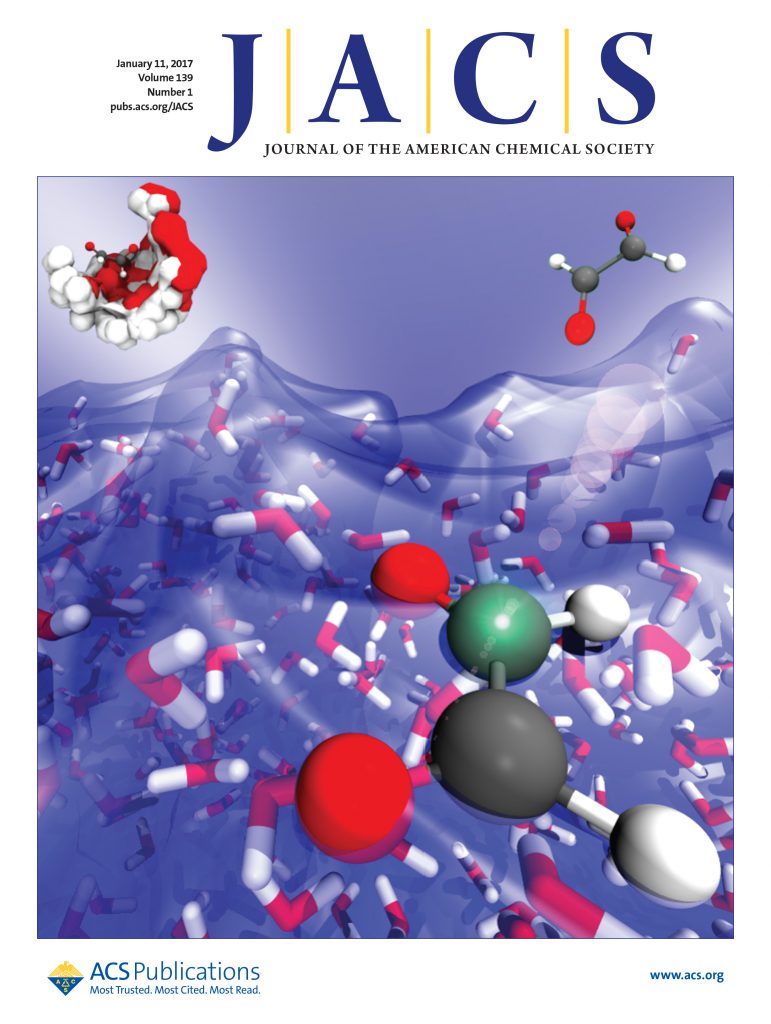电化学诱导相变过程中单个钯纳米晶中的探测应变。
IF 15.6
1区 化学
Q1 CHEMISTRY, MULTIDISCIPLINARY
引用次数: 0
摘要
钯氢体系在催化、制氢和储氢、氢脆和传感技术中起着至关重要的作用。了解钯纳米晶(NCs)从贫氢(α)相向富氢(β)相的转变对于阐明氢的吸收/解吸机制以及氢俘获等相关现象至关重要。在这项研究中,我们仔细地最小化了不希望的x射线束效应,并在电化学控制下使用原位布拉格相干衍射成像来绘制单个钯NCs内与氢吸收和解吸相关的电化学电位的应变和晶格参数分布。跟踪了α和β相晶格参数的变化,观察到α -β相变过程中可逆的应变反转。通过应变、倒易空间分析和分子模拟,提出了α -β相变模型,该模型包括饱和氢的亚表面壳层、β相成核过程中α相的氢耗尽以及β相以球帽方式扩展。本文章由计算机程序翻译,如有差异,请以英文原文为准。
Probing Strain in Individual Palladium Nanocrystals during Electrochemically Induced Phase Transitions.
The palladium-hydrogen system plays a crucial role in catalysis, hydrogen production and storage, hydrogen embrittlement, and sensing technologies. Understanding the transition of palladium nanocrystals (NCs) from the hydrogen-poor (α) phase to the hydrogen-rich (β) phase is crucial for elucidating hydrogen absorption/desorption mechanisms as well as related phenomena such as hydrogen trapping. In this study, we carefully minimized undesired X-ray beam effects and used in situ Bragg coherent diffraction imaging under electrochemical control to map the strain and lattice parameter distribution within individual palladium NCs across electrochemical potentials relevant to hydrogen absorption and desorption. Lattice parameter changes in both α and β phases are tracked, and reversible strain inversion during the α-to-β phase transition is observed. Through strain and reciprocal space analysis and molecular simulations, a model for the α-to-β phase transition is proposed, which includes a hydrogen-saturated subsurface shell, hydrogen depletion from the α phase during β phase nucleation, and propagation of the β phase in a spherical-cap fashion.
求助全文
通过发布文献求助,成功后即可免费获取论文全文。
去求助
来源期刊
CiteScore
24.40
自引率
6.00%
发文量
2398
审稿时长
1.6 months
期刊介绍:
The flagship journal of the American Chemical Society, known as the Journal of the American Chemical Society (JACS), has been a prestigious publication since its establishment in 1879. It holds a preeminent position in the field of chemistry and related interdisciplinary sciences. JACS is committed to disseminating cutting-edge research papers, covering a wide range of topics, and encompasses approximately 19,000 pages of Articles, Communications, and Perspectives annually. With a weekly publication frequency, JACS plays a vital role in advancing the field of chemistry by providing essential research.

 求助内容:
求助内容: 应助结果提醒方式:
应助结果提醒方式:


